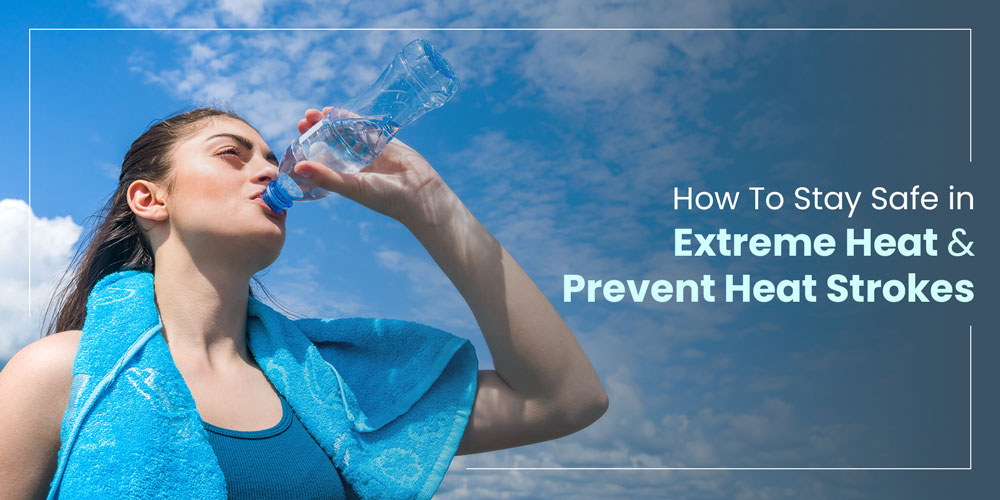With the summers around the corner and the global temperature rising, the concern for heat stroke comes in handy. Heat stroke is the condition when the temperature of the body rises, the cooling mechanism shuts, and the body is no longer capable of regulating body temperature. If left untreated, it can lead to severe conditions and, in extreme cases, may even lead to death.
In heat stroke, the body temperature rises to 40°C and beyond, accompanied by symptoms like nausea, vomiting, headache, flushed skin, and rapid heartbeat.
You are advised to take immediate action if you suspect a heat stroke.
Preventive Measures From Heat Stroke
Your well-being should always come first, so here are some of the preventive measures that you can take to protect yourself from a heat stroke.
1. Stay Hydrated
Drink plenty of water throughout the day; it helps in regulating body temperature
Avoid caffeinated drinks as it leads to dehydration
Consume electrolyte-rich drinks to maintain the balance of salts in your body.
2. Limit Sun Exposure
Avoid going out during peak sun hours in a day
If you are outside, prefer sitting or standing under a shade.
3. Use Sunscreen
Apply Sunscreen with an SPF of at least 15
Reapply Sunscreen every two or three hours if required.
4. Create a Cool Environment
Use fans, coolers or air conditioning to cool down your home
Take cool showers or baths to reduce your body temperature.
Recognizing and Responding To Heat Strokes
If someone shows symptoms of heat strokes, then as advised before immediate action is required, the following steps should be taken:
1. Call emergency Services – Dial the local emergency number.
2. Move the person to a relaxed area – Move the person to a shaded area or somewhere indoors; try placing them near a fan or air conditioner.
3. Cool down the person – To reduce body temperature, if possible, immerse the person in a cool bath and apply an ice pack or cold wet clothes on areas with abundant blood vessels.
4. Monitor and Assist – Don’t leave the person alone; continuously monitor the person’s breathing, pulse and heartbeat. Try gathering information regarding the food the person had or if they took some medication.
5. Don’t give fluids – If the person is unconscious, don’t force him to take any fluid as it may result in vomiting. You can try giving him small sips of cold water when the person is conscious and can drink and eat.
Additionally, what can be done in excess clothes can be removed to cool down the body more effectively. Remember that these steps can significantly increase the chance of positive outcomes but should not replace professional help.
Frequently Asked Questions
What should you do immediately for heat stroke?
To prevent heat stroke, immediately dial the emergency contact number or get the person in a shaded cool area.
How to protect yourself from heatwaves?
Drink plenty of water, avoid sun exposure, try staying indoors in the afternoon, apply Sunscreen, and wear loose clothing.
Does Sunscreen protect you from heat stroke?
Sunscreen directly does not prevent heat stroke; however, using it as part of a broader sun safety strategy can indirectly help reduce your risk of heat-related illnesses. It also prevents the risk of getting skin cancer.
Read our blog about 5 Ways to Stay Healthy & Happy This Summer

